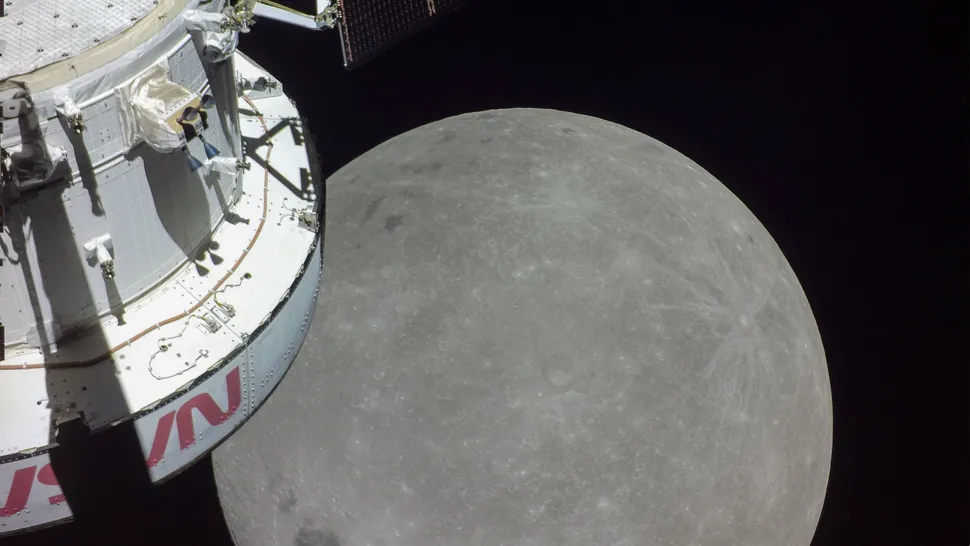NASA’s first two crewed Artemis moon missions have been pushed back to 2026 and 2027, respectively, and the move could have big ramifications for the agency’s Artemis program and competition with China for leadership in space.
Artemis 2, which will send a crew of three Americans and a Canadian astronaut around the moon, was due to launch in September 2025. The mission has now been moved back to April 2026, NASA announced on Dec. 5. Artemis 3 — which is set to put humans on the surface of our nearest celestial neighbor for the first time in more than half a century — has also slipped, from late 2026 to mid-2027.
The latest delays stem, in part, from an issue with the Orion crew spacecraft and its heat shield which was detected after a “skip reentry” during the uncrewed Artemis 1 mission in late 2022.
“We have since determined that while the capsule was dipping in and out of the atmosphere as part of that planned skip entry, heat accumulated inside the heat shield outer layer, leading to gases forming and becoming trapped inside the heat shield,” NASA Deputy Administrator Pam Melroy said during a Dec. 5 press conference. “This caused internal pressure to build up and led to cracking and uneven shedding of that outer layer.”
Artemis 2 will still use Orion, but with a different reentry trajectory to better manage the resulting heat. “The safety of our astronauts is always first in our decisions,” NASA Administrator Bill Nelson said.
The delay allows NASA more time to understand and fully address the Orion issue, and also to get the landing systems and other aspects like lunar extravehicular activity suits ready for the missions. It will also allow for improvements and increased safety. However, it may disrupt the momentum of contractors and suppliers, which is no small matter; a lack of regular flight cadence can lead to inefficiencies and a loss of expertise.
But most notably, the announcement of the delays to the Artemis missions comes at a time of flux for NASA. It brings a level of uncertainty to the missions themselves, their architecture and perhaps even the entire Artemis program.
Donald Trump was elected as president of the United States in November and is set to return to the White House in January. He campaigned on a platform of cutting budgets and lowering taxes. That, in itself, could spell trouble for NASA programs deemed costly or inefficient.
One aspect of Artemis rumored to be immediately under threat is the Space Launch System (SLS), the giant rocket designed to launch Orion to the moon. The launcher has been under intense scrutiny for years due to vast cost overruns and numerous delays in development. A mobile launch tower for the SLS has also been afflicted by cost overruns and delays. The U.S. Government Accountability Office (GAO) in September 2023 described the rocket as “unaffordable” for sustained space exploration.
Trump has publicly nominated Jared Isaacman, a billionaire with two private spaceflights using SpaceX hardware under his belt, to head up NASA. Elon Musk, Trump’s wealthiest supporter and an active part of the presidential campaign, is close to the president-elect and is thought to be in a position to influence policy.
That has raised the possibility that a new Trump administration could replace SLS with Starship from Musk’s SpaceX. Starship is already part of the architecture for future Artemis missions, and its reusability and cost-effectiveness, if proven, would give it major advantages over the expensive, expendable SLS. Such a move would not be straightforward, but the new delays may make this more possible.
In terms of international competition, the delay of Artemis 3 to 2027 further narrows the margin between NASA’s return to the moon and China’s attempt to put its first astronauts on the lunar surface. Beijing has committed to a mission to put two astronauts on the moon before 2030 and is actively working on all of the elements needed to achieve the feat, including a new rocket, spacecraft, lander and launch pad.
Making the first crewed landing on the moon this century would be a symbolic victory for either country. It would also demonstrate momentum and technological prowess, and could provide the perception of leadership in space.
One further possibility, however, is that NASA drops the moon as the goal, looking deeper into space. While NASA sees the moon as a stepping stone to Mars, it could, potentially, look to skip a step.
Musk has been very vocal about his plans to put humans on Mars, and Starship is integral to this effort. An administration close to Musk could also, potentially, decide to back Starship and switch focus from the moon to the Red Planet. Again, such decisions will be a complex interplay of individuals and institutions such as Congress, making big changes difficult to manufacture.
But big changes are possible, and they would have geopolitical ramifications. Both the U.S. and China are working to secure partners for their respective Artemis and International Lunar Research Station (ILRS) programs, and ending Artemis could give China’s efforts a massive boost.
There would also be consequences for NASA’s partnerships with the European Space Agency and its member states, Japan, the United Arab Emirates and more, which are engaged in Artemis and projects including the lunar Gateway. It was also the first Trump administration that kicked off Artemis, and the incoming president may well want to oversee a triumphant return to the moon.
NASA officials underlined on Dec. 5 that the Artemis program is viewed as a cornerstone for advancing human exploration and for the moon to Mars and beyond. The agency is aiming to maintain a consistent flight cadence, while reducing gaps between missions and incorporating lessons learned. However, change may be coming to the agency’s plans for Artemis and beyond.
Source: https://www.space.com/space-exploration/artemis/nasa-delays-artemis-missions-again-what-could-this-mean-for-the-moon-mars-and-space-leadership



